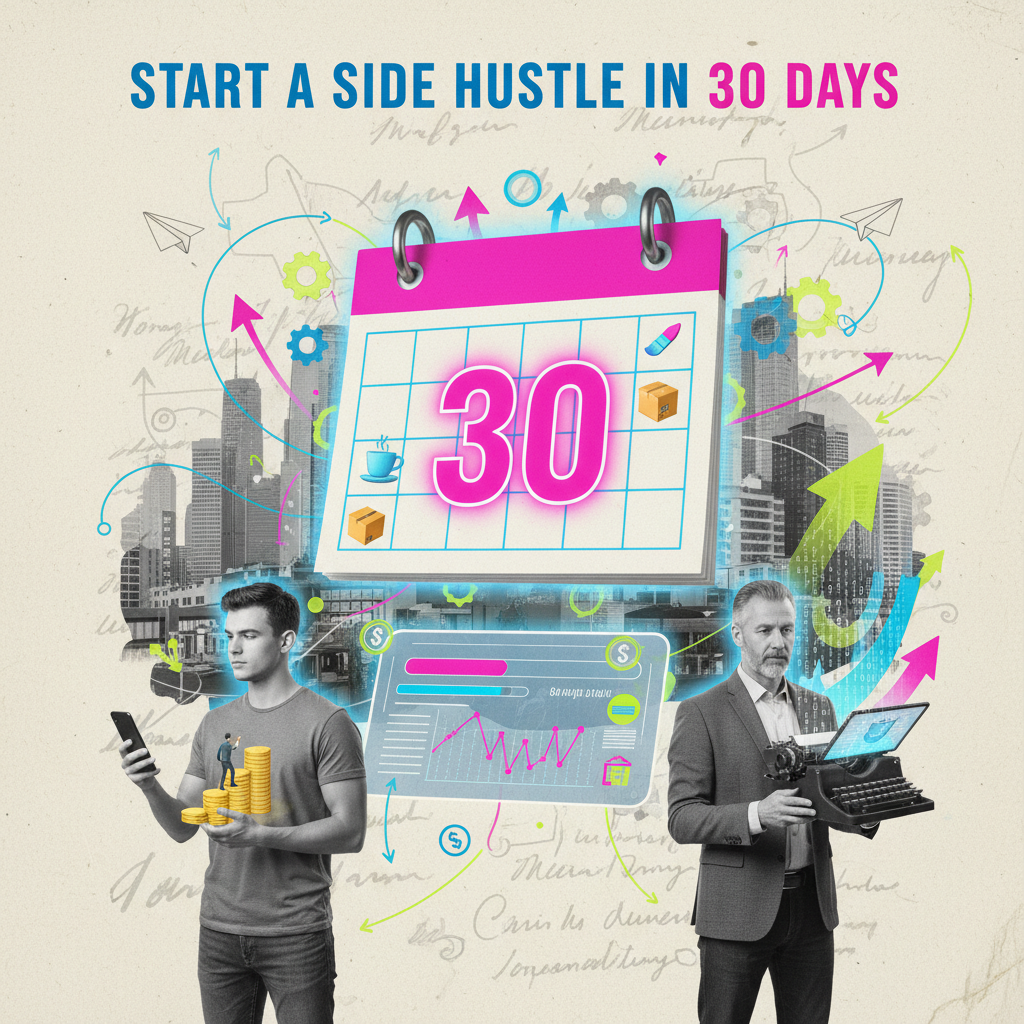Feel stuck? This guide shows the exact steps to launch a profitable side hustle fast
You stare at the same spreadsheet, the same inbox, the same “what‑if” that keeps looping in the back of your mind. It’s not that you lack ideas—most of us have them in abundance—but the gap between a spark and a sustainable side hustle feels like a canyon you can’t bridge. That gap isn’t just about time or money; it’s a story we tell ourselves that “later” is the only safe place to start.
What’s broken isn’t the lack of opportunity; it’s the myth that you need a perfect plan, a massive budget, or a crystal‑ball‑clear market before you can even test the waters. The truth is quieter: most profitable side hustles begin with a single, imperfect step and evolve through rapid, intentional iteration. I’ve watched dozens of people—busy parents, mid‑career professionals, recent grads—turn a modest idea into a steady stream of income simply by treating the first month as an experiment, not a launch.
I’m not a guru with a flawless formula, but I’ve spent the last few years mapping the exact cadence that turns curiosity into cash in thirty days. The patterns are consistent, the missteps predictable, and the payoff surprisingly reachable when you strip away the fluff and focus on the mechanics that actually move the needle.
If you’ve ever felt that knot of frustration—knowing you could create value but unsure how to get from thought to paycheck—you’re about to see the invisible levers that keep most side‑hustle dreams stuck in the idea stage. Let’s unpack this.
Why the “perfect plan” myth kills momentum
You’ve probably heard the mantra: “Plan first, act later.” In reality, that mantra is a polite way of saying, “Stay comfortable and avoid risk.” The moment you wait for a flawless blueprint, you hand the reins to fear. Think of a chef who refuses to taste the soup until the entire menu is finalized – the dish never gets served. The same principle applies to side hustles. The first week should be a series of micro‑experiments: a landing page, a survey, a prototype. Each tiny data point tells you what works and what doesn’t, and you iterate faster than a startup with a million‑dollar budget. By treating the plan as a living document, you keep the momentum alive. The cost of a “perfect” plan is the opportunity cost of never launching. Embrace imperfection, capture feedback, and let the market shape your direction. This mindset shift is the first lever that turns a vague idea into a testable, revenue‑generating engine.
How to structure the first 30 days as an experiment, not a launch
Imagine you have a 30‑day sprint, not a marathon. Break it into three phases: discovery, validation, and early monetization. Week one is pure curiosity – interview five potential customers, watch how they solve the problem today, and note the language they use. Week two, build the simplest version of your solution – a one‑page website, a mock‑up, or a service offer you can deliver in an afternoon. Then, put a price tag on it and test with the same interviewees. Week three, iterate based on feedback and start taking the first payments. The key is a daily habit: spend at least one hour on a tangible output, whether it’s a questionnaire, a draft email, or a social media post. Track three metrics – interest (sign‑ups), willingness to pay (pre‑orders), and repeat intent. If any metric stalls, pivot quickly. By the end of the month you’ll have a revenue stream, however modest, and a clear roadmap for scaling. The experiment mindset removes the pressure of perfection and replaces it with actionable data.
What happens if you ignore the experiment mindset – and why that costs more than you think
Skipping the experiment phase is like building a house on sand. You might get a roof over your head, but the foundation is shaky, and the whole structure is vulnerable to the first gust of market change. Ignoring rapid iteration means you’ll invest time and money into features no one wants, chasing a phantom customer. The hidden cost is opportunity loss – the months you could have been earning while you were perfect‑planning. Moreover, the psychological toll of endless tweaking erodes confidence; you start doubting the viability of any idea. Real stories abound: a freelancer spent six months polishing a niche course that never sold, while a peer launched a rough draft, got feedback, and earned $2,000 in the first week. The lesson is stark: without the experiment mindset, you trade potential cash flow for a false sense of security. Embrace the uncomfortable truth that early, imperfect revenue beats late, perfect profit every time. This realization fuels the courage to act now, not later.
You asked yourself why the “later” you keep hearing feels like a safe‑zone trap. The answer is simple: the trap is built on the myth of a perfect plan. In the last thirty pages you saw how turning that myth on its head—by treating the first month as a series of tiny experiments—creates a bridge from spark to cash. The real breakthrough isn’t a checklist; it’s the decision to act now, imperfectly, and let data rewrite the story. So tomorrow, spend one hour building the smallest version of your idea and put a price on it. Let the market’s reaction be your compass. That single, intentional step dissolves the canyon between thought and profit, and it’s the only step you truly need to take.


Leave a Reply